瓜达尔幼儿成长中心,富村,考卡,哥伦比亚
2016-07-19建筑设计丹尼尔约瑟夫费尔德曼莫尔曼伊万达里奥基尼奥内斯桑切斯ArchitectsDanielJosephFeldmanMowermanIvDarioQuionesSanchez
建筑设计:丹尼尔·约瑟夫·费尔德曼·莫尔曼,伊万·达里奥·基尼奥内斯·桑切斯Architects: Daniel Joseph Feldman Mowerman, Iván Dario Quiñones Sanchez
瓜达尔幼儿成长中心,富村,考卡,哥伦比亚
建筑设计:丹尼尔·约瑟夫·费尔德曼·莫尔曼,伊万·达里奥·基尼奥内斯·桑切斯
Architects: Daniel Joseph Feldman Mowerman, Iván Dario Quiñones Sanchez
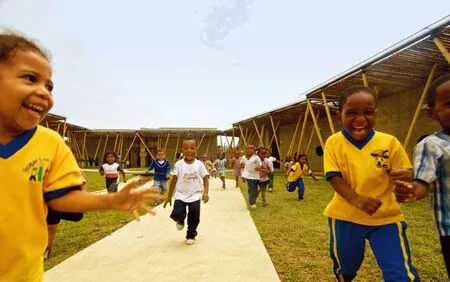
1
1 内院中玩耍的儿童/Children in the inner courtyard
哥伦比亚考卡省富村的瓜达尔幼儿成长中心作为哥伦比亚幼儿全关怀计划“从出生到百岁”的重要组成,为300名0~5岁的婴幼儿、100位孕妇和200个新生儿提供饮食、教育和娱乐服务。中心包括10间教室、餐厅、室内外娱乐空间、半私密艺术空间、急救室、行政办公室、菜园、水景、公共露天剧场和活动广场。
该中心于2013年10月落成,标志着为期3年的参与式设计和施工的成功,这种努力从一开始就为人们带来了自豪和归属感。设计在空间、材料、尺寸以及与城市关系上,以同本地幼儿、青少年、年轻从业者以及领导人的手势游戏作为出发点。施工持续了9个月,项目总成本为160万美元。建设资金来自国际合作、私人捐助、公共资源和实物捐赠。施工过程中雇佣了60多位具备施工技术资格的本地建筑工人。除了施工还对30名本地妇女进行了婴幼儿教育培训,随后授予资格并聘为中心的日常工作人员。
瓜达尔幼儿成长中心为城市带来了可观的影响,因为它给公众提供了优美的人行道和景观、公共露天电影院、公共广场,以及在夜晚和周末向社区开放的半私密艺术演出厅。丰富多彩的公共娱乐活动使幼儿中心成为里卡镇新的活动焦点。
10间教室是按照瑞吉欧教学体系设计的,其中包括开放空间、障碍物和多种变化。这一切让穿行在中心有如探险之旅,既是一种挑战又是一种游戏,使教育成为一种娱乐。许许多多的出入口通过小山、小桥、楼梯和滑梯与成对的教室连在一起,让建筑成为培养决策和个人成长的环境。每间教室都有独立的卫生间,孩子们随时可以使用。教师不必再带孩子们去卫生间,可以专心教学。
这个项目是低技环保建筑的典范。它在选材、用水和能耗以及材料耐久性上都给予了环保考虑。所有的空间在白天都是自然采光和通风,使中心的运行达到零能耗。有纹理的混凝土墙会吸收热量,保持空间凉爽。多层的屋顶控制着日照对房间的影响。竹子是当代对本地传统的一种新认识,体现出使用本地材料和保护河床的需求。每间教室都能收集雨水,用于园艺和养护。收集和利用的过程还特意能让孩子和游客看到。中央的水景会循环用水,孩子们也可以把它当做游乐的场所。
有纹理的墙体是用本地技术加工的劈竹模具建成的。顶着回收瓶子的栅栏是由教师收集和安装的,如今他们的工作是照顾中心里的孩子。
最后,瓜达尔逐渐变成了新的城市中心。这里不但有教育和艺术活动,还能让几代人聚在一起,使护理市内婴幼儿成为社区的责任。□(尚晋 译)
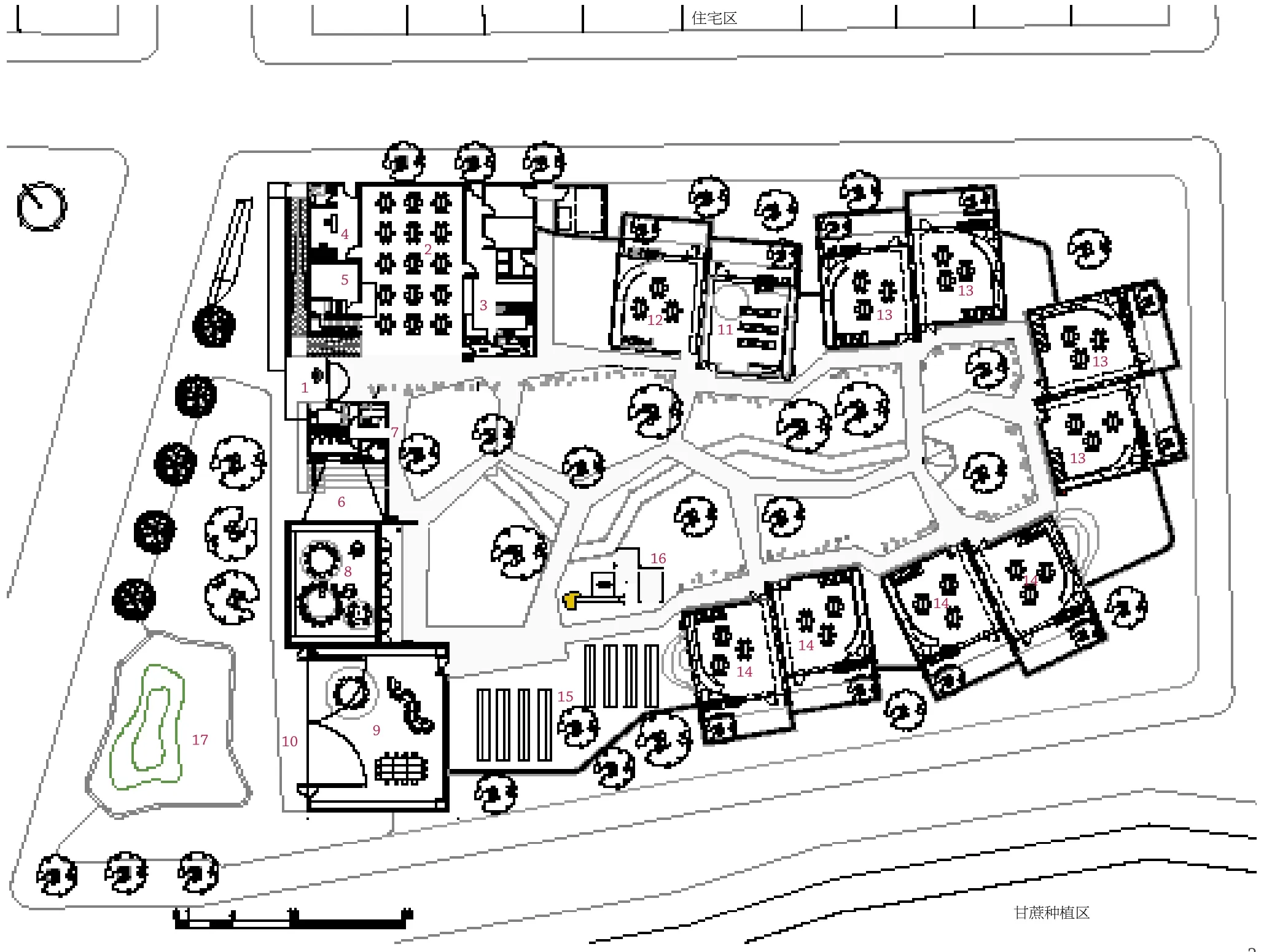
2
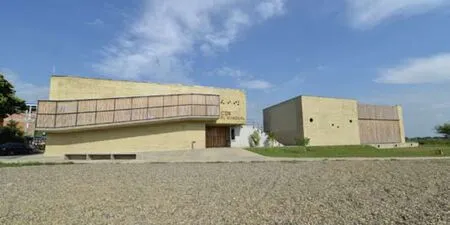
3
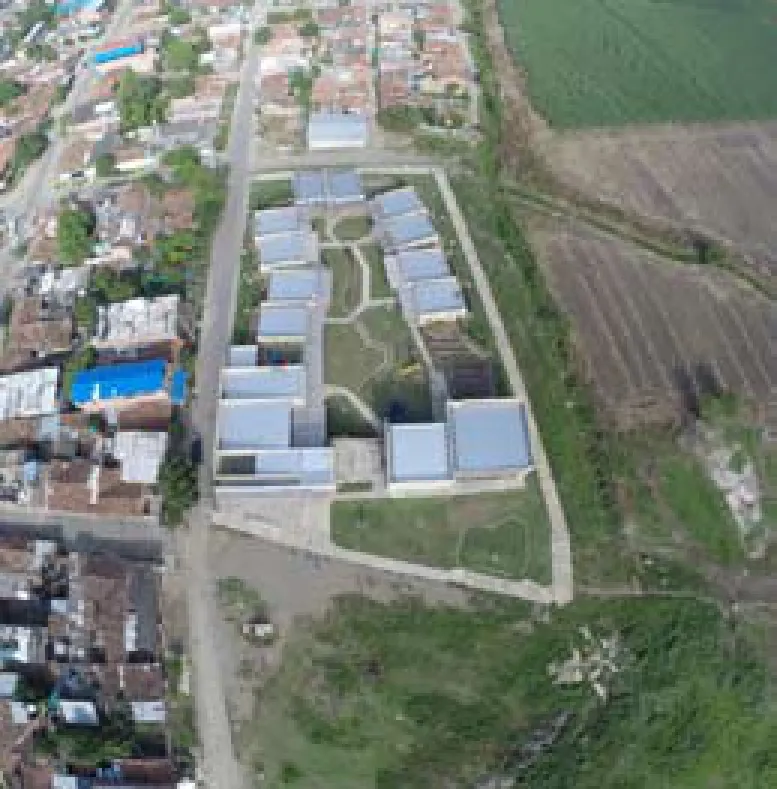
4
2 首层平面/Floor 0 plan
3 入口/Entrance
4 鸟瞰/Aerial view
1-入口/Access
2-食堂/Canteen
3-厨房/Kitchen
4-护理室/Nursing room
5-储藏室/Storage
6-梯形剧场/Teater terrace
7-卫生间/Toilets
8-游戏室/Play room
9-多功能厅/Multifunction hall
10-舞台/Stage
11-幼儿室/Nursery
12-教室(3~23人)/ Classroom for 3~23 desks
13-教室(24~35人)/ Classroom for 24~35 desks
14-教室(36~60人)/ Classroom for 36~60 desks
15-果园/Orchard
16-儿童嬉戏场/ Children's playground
17-小型公共广场/ Small public square

5

6
5 从内院看梯形剧场/View of the theater, from inner courtyard
6 竹墙/Bamboo wall
项目信息/Credits and Data
客户/Client: 哥伦比亚家庭福利研究所/Instituto Colombiano de Bienestar Familiar (ICBF)
建筑设计/Architectural Design: 赞助计划/Plan Padrino, 总统幼儿顾问/Presidential Counseling for Early Childhood,哥伦比亚共和国总统府/Presidency of the Republic of Colombia.
总顾问/Presidential Counselor: María Cristina Trujillo de Muñoz
建筑师/Architects designers: Daniel Joseph Feldman Mowerman, Iván Dario Quiñones Sanchez
建造商/Constructor: 共享基金会/Fundación Compartir
用地面积/Land area: 4805m2
建筑面积/Construction: 1823m2
开工时间/Beginning Time: 2012.10
竣工时间/Completion: 2013.09
鸣谢/Contributors: Gabriel Cano, Andrés Ortega, Eugenio Ortiz, Sandra Pineda
摄影/Photos: Iván Dario Quiñones Sanchez
Composed of 10 classrooms, dining hall, indoor and outdoor recreation, semi-private arts spaces,first aid room, administration, vegetable garden,water feature, public outdoor theater, and a civic plaza, El Guadual Early Youth Development Center in Villa Rica, Cauca provides food, education, and recreation services to 300 kids arranging from 0 to 5 years old, 100 pregnant mothers, and 200 newborns as part of the national integral early youth attention strategy "de Cero a Siempre".
The Center's inauguration in October 2013 marked the end of a three-year-long participatory design and construction effort that has strived to generate pride and ownership since the beginning of the process. Design charades with local kids,teenagers, early youth workers, and leaders were the starting point of the design in terms of spaces,materials, dimensions, and relations with the city. Te construction lasted 9 months and the total cost of the project was US$1.6 Million. Te funds to build the project came form international cooperation,private donations, public resources, and in kind donations. During the construction process more than 60 local builders were employed and certifed in construction techniques. Additional to the construction jobs, 30 local women were trained in early youth educator before being certifed and hired to become the daily workforce of the center.
El Guadual has generated a notable urban impact for it offers generous sidewalks and landscape to the public, an open public outdoor movie theater,a semi-private arts and performing room open to the community at night and weekends, and a civic square. Te wide array of public amenities has made El Guadual a new pole of activity within Villa Rica.
Te 10 classrooms following the Reggio Emilia pedagogic system in design offer open spaces,obstacles, and multiple variables to navigate the center making the process of discovering the center itself both a challenge and a game making education a recreational experience. Numerous entrances and exits connecting paired up classrooms through mountains, bridges, stairs, and slides foster an environment of decision taking and individual development through architecture. Each classroom has its own bathroom allowing kids to use it whenever they feel like it, not when the teacher can take them allowing educators to focus on pedagogical activities.
The project is an example of low tech environmental construction. It is responsible to the environment in terms of the materials used, the water and energy it consumes, and the durability of the materials. Te spaces all receive natural light throughout the days and are ventilated naturally allowing the center to work without the need of energy. The textured concrete walls absorb heat keeping the spaces cool, and the multi-layered roof controls the impact of the sun inside the rooms. Te use of bamboo as a way of re-valuing local traditions in a contemporary way that speaks of the need to use local materials as well as preserve the riverbeds. Each classroom collects rain water used for gardening and maintenance, but makes the process of collection and utilization evident for the kids and visitors. The central water feature recirculates the water it uses and allows kids to interact with water as a recreational element.
The textured walls were made using local techniques of split bamboo form work. The fence capped with recycled bottles were collected and installed by the educators who now take care of the kids in the center.
Finally, El Guadual is slowly transforming a new city center where education, arts, and multigenerational gatherings are taking place making the care of the municipalities early youth a communal responsibility.

7

8
7.8 剖面/Sections

9

10

11

12

13
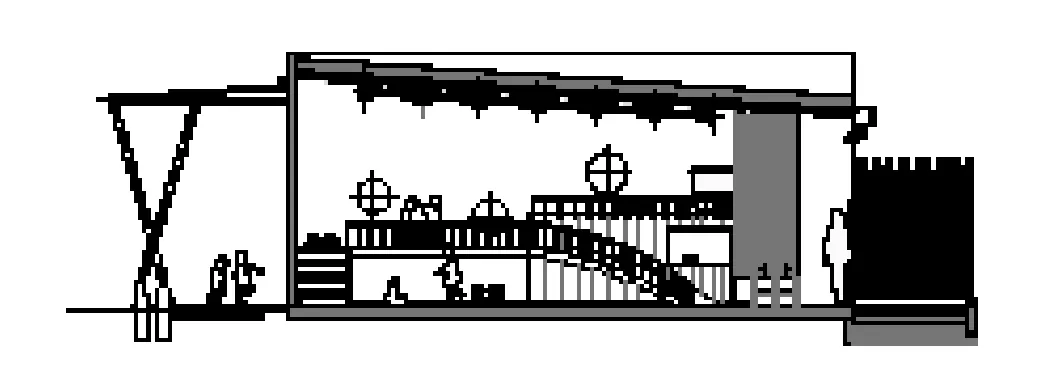
14
9 内院/Inner courtyard
10 教室/Classroom
11 游戏室/Play room
12 教室平面/Plan of classroom
13.14 教室剖面/Sections of classroom
评论
布鲁诺·斯塔尼奥:这个项目多次强调了作为主材的竹子。对于竹子广泛而多样的应用成为该设计的主导。广阔的空间有利于教学活动的进行,儿童可以在学校里自由、适度地活动。教室里的吊顶和花架中用到的竹子元素与浇筑混凝土墙之间产生了对比。被动设计则体现了该项目对于热带地区、发展中国家的社会经济学情况和环境多元性下的可持续建筑的践行。(王欣欣 译)
Comments
Bruno Stagno: Te project emphasizes the use of bamboo as a primary material that is used in multiple applications. Te wide variety in the use of bamboo becomes the main conductor of its design. Te wide spaces are an attraction for pedagogy and children move freely and appropriately in the school. In the classrooms, the bamboo elements in ceilings and pergolas provide a contrast with the monolithic concrete walls. The passive design reflects the commitment to sustainable architecture for tropical latitude, socioeconomic conditions of developing countries and environmental variables.
LIU Chen: Arranged in slightly offset pairs and enclosing a courtyard, the classrooms have a formal yet lively ambience, offering endless joys and surprises from interior to exterior, bottom to top, all for the children to create and discover. Te childhood development center thus realizes a double value as a place for cultivating human characters in both social and natural terms. Through learning and practicing,the children gradually acquire socializing skills while at the same time develop a compassion for nature. Te ultimate concept of this low-tech environmental project is revealed in its emphasis on childhood education. Compared to those who grow up in the "concrete forest", a childhood spent in a green education base like this would be much more rewarding and meaningful for the future.
刘晨:教室成双成对,既规矩又调皮,里面、外面、上面、下面,都有无穷的乐趣和惊喜,等着小朋友去创造和发现。这是一个有双重意义的成长中心,人的社会属性和自然属性均得到培养,孩子们不但学习与同伴相处,还学着与自然相处,他们认识自己的同类,也认识其他生物,慢慢懂得爱护自己和他人、爱护所有的生命。低技环保最终体现的是“绿色从幼儿开始”的理念,由此可见设计者的良苦用心。孩子们在这个绿色教育基地茁壮成长,比起水泥森林中长大的同伴,他们该是多么幸福和充实。

15
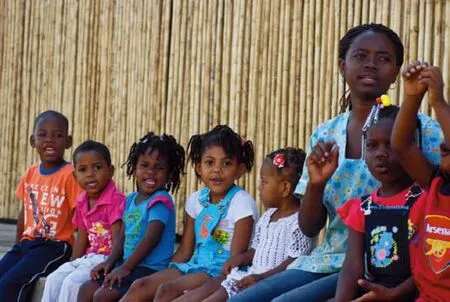
16
15.17 圆形窗/Round window
16 竹墙/Bamboo wall
18 果园/Orchard

17

18
El Guadual Early Childhood Development Center, Villa Rica, Cauca, Columbia, 2013
